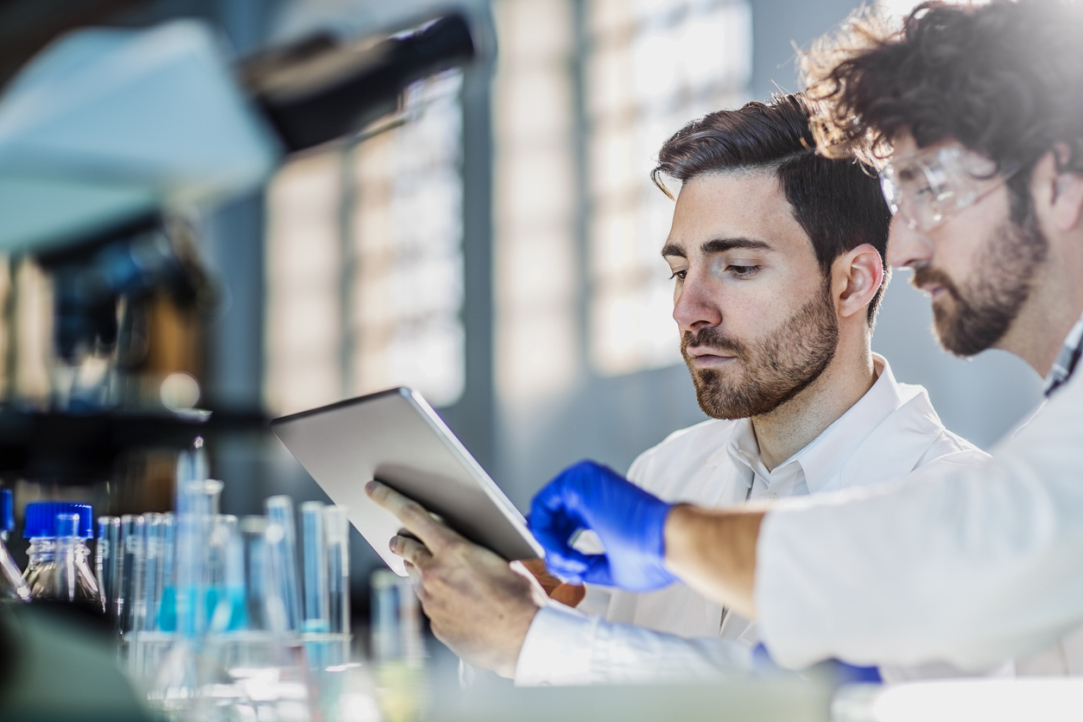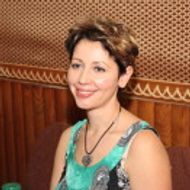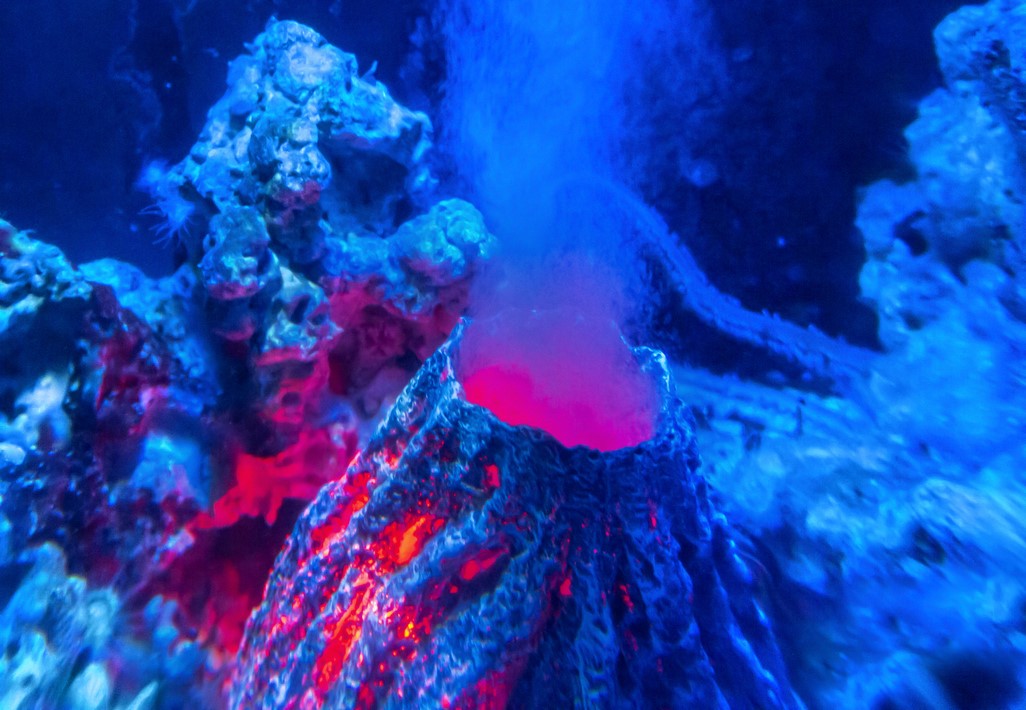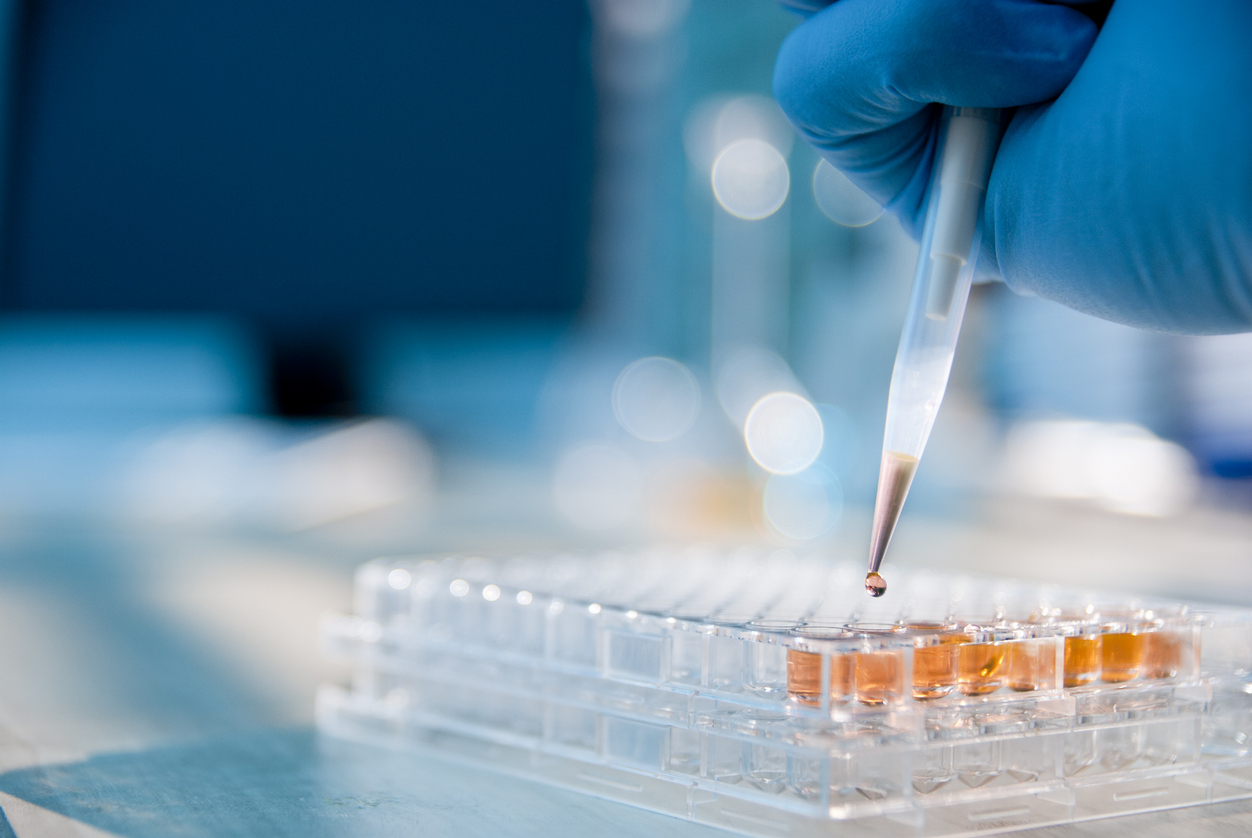‘It’s Thrilling to Have an Opportunity to Discuss Your Scientific Ideas with Interested People’

The International Laboratory of Dynamical Systems and Applications at HSE University–Nizhny Novgorod conducts in-depth theoretical and applied research, including the study of ocean waves, solar corona reconnections, volcanic phenomena, and ship stability. The lab’s researchers, who have received more than 20 significant research grants over the past five years, actively cooperate with Russian and international colleagues from China, Spain, the USA, the UK, Brazil, and other countries. Prof. Olga Pochinka spoke to the HSE News Service about the laboratory’s work.
— When was the laboratory established?
— Let's start with 2014, when our colleagues from the HSE University–Moscow Faculty of Mathematics proposed creating a faculty at HSE University in Nizhny Novgorod, and we got excited about the idea. Five of us transferred from Nizhny Novgorod State University to HSE University–Nizhny Novgorod, and in 2015 we launched the first enrolment of undergraduate students in ‘Mathematics’—eight people in total.

Olga Pochinka
The enrolment grew rapidly, and I started inviting people from Nizhny Novgorod State University. We worked as researchers at the Laboratory of Theory and Practice of Decision-Making Support Systems and taught students at the same time.
In 2017, we joined the Laboratory of Topological Methods in Dynamics, and in 2019 we won a government mega-grant—the only mega-grant in fundamental mathematics won in the Nizhny Novgorod region in the entire history of projects. Our leading scientist, Dmitry Turaev, is a former resident of Nizhny Novgorod who is now a professor at Imperial College London and a renowned specialist in the field of dynamical systems.
The laboratory began to grow rapidly, and alongside an increase in research, we also expanded our educational areas: we created doctoral and master's programmes, and this year we are launching a new bachelor's programme in applied mathematics.
— Tell us about the priority areas of the laboratory's work.
— Initially, our laboratory was created primarily as a centre for basic research. Mathematics is a self-sufficient science, and there are always people who are interested in learning its laws. Another equally important activity is to explain how these laws work in practice. Recently, scientists actively engaged in applied research have joined the laboratory.
— What areas of activity would you like to highlight?
— We have tasks that originated in physics. For example, we studied the effects of reconnection in the solar corona. From the point of view of deep mathematical theory, we have explained the mechanism of solar flares. If we imagine the surface of the Sun as a two-dimensional sphere, then the magnetic charges on the surface create domes that change their location depending on the configuration of the charges. When the domes collide, so-called separators appear, which visually manifest themselves in the appearance of a solar flare. The mechanisms of dome attachment were explained using the well-known bifurcation of the birth of a heteroclinic curve in the theory of dynamical systems.
We also managed to explain the pattern recognition algorithm by the existence of an energy function in a dynamical system. In general, the tasks associated with the construction of such functions are very important. By and large, all dynamical systems are dissipative, ie they lose energy over time. We have succeeded in establishing the relation between the energy function and the dynamics of the system. A scientist can measure the parameters of its energy function and say a lot about the dynamics of the system even without knowing the system.
These are just the applications that I've worked on personally. But there are many employees in the laboratory who develop other applied areas.
Efim Pelinovsky and Ekaterina Didenkulova conducted a theoretical analysis of the internal waves that occur in the ocean during an explosive eruption of an underwater volcano. They calculated the characteristics of the wave field for different ratios between the radius of the explosion and the depth of the basin. They showed that the field of internal waves has the form of frequency-modulated groups, the head group of which has the maximum amplitude. The maximum height wave in this wave train arrives much later than the weak head wave, which makes it possible to prepare for the approach of dangerous waves.

Ioann Melnikov studies the dynamics of waves in both linear and nonlinear weakly dispersive models. When working with shallow water equations, there is an interesting question about finding non-reflective bottom profiles, thanks to which a wave can propagate unhindered over long distances (while conserving energy), which is important in terms of applications. Together with Efim Pelinovsky, he obtained a countable family of limited bottom profiles and a continuous family in the form of underwater slides. Research on weakly nonlinear and weakly dispersive models (described by Korteweg—de Vries equations) is also aimed at searching for and studying waves that propagate with constant velocity and unchanging shape (in particular, soliton solutions). This is how the classification of the forms of soliton solutions in the generalised Korteweg—de Vries equation was obtained, and now the question is how this classification can change with a different account of nonlinearity and variance.
Fedor Peplin is engaged in computational fluid dynamics, motion dynamics, and stability of high-speed vessels. He determined new criteria for the stability of hovercraft and built a model of hovercraft dynamics with flexible skegs, which makes it possible to design amphibious equipment for operation in hard-to-reach regions. He studied issues related to the damping of various types of high-speed vessels. He is currently working on obtaining new, refined criteria for the stability of promising amphibious vehicles, taking into account the design features and operating conditions of the vehicles. Methods for modelling the dynamics of flexible pneumatic structures in a fluid flow are also developed.
— There are several research groups inside the laboratory conducting research in different directions. How did you manage to bring them together?
— Dynamical systems are the formative direction, but almost all phenomena in the world fall under the definition of ‘dynamical systems.’ Natalya Stankevich uses them for research in biology and medicine, and Alexey Kazakov is engaged in numerical calculation for specific systems of differential equations describing such phenomena as turbulence, the Celtic stone, the Chaplygin spinning top, etc.

Specialists in such fundamental mathematical fields as algebra, geometry, topology, theory of functions, etc, which are not directly related to dynamical systems, also enjoy being in the laboratory under the umbrella of dynamical systems. There is a very strong group of physicists involved in fluid mechanics. Such a scientific symbiosis often brings unexpected results at the junction of research fields.
— How do you attract such diverse specialists?
— As a rule, an early-career or accomplished scientist joins the laboratory after winning a grant or as a participant of a project. The laboratory management does everything possible to create comfortable working conditions for employees and support any creative initiative. People appreciate this and in most cases remain in the team even after the project is completed. Some even move to Nizhny Novgorod for the long term.
Educational activity is another source of promising researchers. Since the laboratory is involved in several degree programmes, the range of which expands every year, the teaching staff naturally increases. Due to the presence of a scientific department, teachers have a lower workload than in previous jobs. Newly arrived employees are happy to devote their free time to research.
Students of our programme ‘Pure and Applied Mathematics’ make up the main influx of lab personnel.
We strive not only to attract students to research, but also to track their reciprocal interest. We offer them work as research assistants, and some of them come during the first year of their bachelor's studies. We involve them in active scientific life through grants, schools, and conferences. The vast majority remain in the laboratory, and this is a huge driving force
There are now 60 staff members working at the laboratory, which can be compared to a small research institute.
— How important do you consider mentoring and personal example in science?
— I find it extremely important. In our team we managed to ensure continuity between generations. We have employees in our laboratory who are over 75–80 years old, very experienced scientists, some of whom studied with academician Alexander Andronov—his closest associates and students. There are not many middle-aged scientists like me, but we managed to introduce prospective scientists to esteemed researchers, such as my supervisor Vyacheslav Grines and his colleagues in the school of nonlinear oscillations.
The scientific school of nonlinear oscillations was created in Gorky (now Nizhny Novgorod) by young researchers who moved to the then-closed city, led by the prospective academician Alexander Andronov. As physicist, he focused on describing mathematical models of physical processes and phenomena, translating them into mathematical language. He created the Radiophysics Faculty at Gorky State University. Later, the Institute of Applied Mathematics and Cybernetics was established and the scientific school (known worldwide as the school of dynamical systems) emerged.
— How do you manage to find resources for research?
— We constantly apply for grants and development programmes—both for renowned researchers and prospective scientists, externally and within the university. Over the past five years we have won 21 grants, which is a lot for a relatively small team. I’d like to thank our young and experienced colleagues who handle the very time-consuming application procedure. In general, the basic rule of an ambitious team is to keep moving forward. Even if it seems that you already have everything you want today, you must constantly set new goals.
— Tell us about the launch and work of the international academic cooperation project.
— The project with Tongji University (Shanghai) is a joint Russian–Chinese grant. It started in 2024 and will be implemented for three years. The project mainly involves fundamental research on the qualitative theory of dynamical systems. We met the Chinese co-director of the project, Bin Yu, back in 2010 in France, where we worked together with the renowned dynamist Christian Bonatti. Since then, we have written several joint articles.
International scientific cooperation and the exchange of ideas are always great. Our young staff went to China, and everyone really liked the atmosphere at the partner university. It’s thrilling to have an opportunity to discuss your scientific ideas with interested people.
— What other initiatives are the laboratory and its staff involved in?
— For the past nine years, the annual international conference ‘Topological Methods in Dynamics and Related Topics’ has been bringing like-minded scientists from all over the world to HSE University in Nizhny Novgorod. This year we are holding another scientific conference dedicated to the 30th anniversary of the Nizhny Novgorod Mathematical Society, which I currently chair.
Every March for six years now, we have held the ‘Mathematical Spring’ school for students. We invite various lecturers and speakers, and judging by the feedback from students, this is a very interesting format for them.
For the second year in a row, we and our colleagues from Moscow State University and MIPT are organising a student school at the Sirius Mathematics Centre. Organising the all-Russian review of students' theses, which this year will be held for the fifth time, is also a promising initiative.
In June and July, we hold the ‘Intellectual’ series of thematic sessions for school students. The students immerse themselves in mathematics, including applied mathematics, computer science, and artificial intelligence. It has now been held ten times, and in recent years has taken place at the Salyut camp in the Nizhny Novgorod region.
Throughout the academic year, we hold a ‘Mathematical Academy’ where students get their first experience working with scientific research. Our scientists generously share interesting tasks with young talents, and led by our scholars, students annually win the Scientific Student Society research competition. I would like to emphasise once again that all this would be impossible without the energy and enthusiasm of our young colleagues. It's great that we have them, and they keep joining our team.
See also:
Designing an Accurate Reading Skills Test: Why Parallel Texts are Important in Dyslexia Diagnosis
Researchers from the HSE Centre for Language and Brain have developed a tool for accurately assessing reading skills in adults with reading impairments. It can be used, for instance, before and after sessions with a language therapist. The tool includes two texts that differ in content but are equal in complexity: participants were observed to read them at the same speed, make a similar number of errors, and understand the content to the same degree. Such parallel texts will enable more accurate diagnosis of dyslexia and better monitoring of the effectiveness of interventions aimed at addressing it. The paper has been published in Educational Studies.
A Space for Economic Experimentation: LEEF Organises Workshop for Early-Career Researchers
In early September 2025, the renewed Laboratory for Experimental Economics and Finance (LEEF) held its first workshop for early-career researchers. Its main distinguishing feature was that every presentation was based on the results of laboratory economic experiments. In particular, the speakers discussed what people consider a fair deal, how best to motivate employees, and how genes influence the willingness to cooperate and help others. All interested students and postgraduates were invited to collaborate with the laboratory.
HSE Researchers Determine Frequency of Genetic Mutations in People with Pulmonary Hypertension
For the first time in Russia, a team of scientists and clinicians has conducted a large-scale genetic study of patients with pulmonary arterial hypertension. The team, which included researchers from the International Laboratory of Bioinformatics at the HSE Faculty of Computer Science, analysed the genomes of over a hundred patients and found that approximately one in ten carried pathogenic mutations in the BMPR2 gene, which is responsible for vascular growth. Three of these mutations were described for the first time. The study has been published in Respiratory Research.
Similar Comprehension, Different Reading: How Native Language Affects Reading in English as a Second Language
Researchers from the MECO international project, including experts from the HSE Centre for Language and Brain, have developed a tool for analysing data on English text reading by native speakers of more than 19 languages. In a large-scale experiment involving over 1,200 people, researchers recorded participants’ eye movements as they silently read the same English texts and then assessed their level of comprehension. The results showed that even when comprehension levels were the same, the reading process—such as gaze fixations, rereading, and word skipping—varied depending on the reader's native language and their English proficiency. The study has been published in Studies in Second Language Acquisition.
Scientists Discover How Correlated Disorder Boosts Superconductivity
Superconductivity is a unique state of matter in which electric current flows without any energy loss. In materials with defects, it typically emerges at very low temperatures and develops in several stages. An international team of scientists, including physicists from HSE MIEM, has demonstrated that when defects within a material are arranged in a specific pattern rather than randomly, superconductivity can occur at a higher temperature and extend throughout the entire material. This discovery could help develop superconductors that operate without the need for extreme cooling. The study has been published in Physical Review B.
'Biotech Is Booming Worldwide'
For more than five years, the International Laboratory of Bioinformatics at the HSE Faculty of Computer Science has been advancing cutting-edge research. During this time, its scientists have achieved major breakthroughs, including the development of CARDIOLIFE—a unique genetic test unmatched worldwide that predicts the likelihood of cardiovascular disease. With the active participation of HSE students, including doctoral students, the team is also working on a new generation of medicines. In this interview with the HSE News Service, Laboratory Head Maria Poptsova shares insights into their work.
Civic Identity Helps Russians Maintain Mental Health During Sanctions
Researchers at HSE University have found that identifying with one’s country can support psychological coping during difficult times, particularly when individuals reframe the situation or draw on spiritual and cultural values. Reframing in particular can help alleviate symptoms of depression. The study has been published in Journal of Community Psychology.
'Today, Human Existence Without Mathematics Is Difficult; Tomorrow, It Will Be Simply Impossible'
Mathematicians around the world share a common language and continue to collaborate despite the challenges of recent years. The hub of mathematical networking has been shifting to China, where scientists from various countries meet at conferences and other academic events. Partnerships with leading Chinese universities offer promising opportunities to strengthen existing ties and forge new ones. In this interview with the HSE News Service, Valery Gritsenko, Head of the HSE International Laboratory for Mirror Symmetry and Automorphic Forms, discusses this and other topics, including what AI is and why the state should engage with mathematicians.
'We Are Now Nearing Practical Application of a Stimulus-Free Brain-Mapping System'
Neural interfaces developed by scientists at HSE University in collaboration with clinicians make it possible to communicate with the brain and decode its signals. The use of such interfaces opens up opportunities to stimulate brain activity, restore and normalise muscle control in patients who have suffered a stroke, heart attack, or other neurological disorders, and support the rehabilitation of individuals with traumatic brain injuries or limb loss. Alexey Ossadtchi, Director of the Centre for Bioelectric Interfaces at the HSE Institute for Cognitive Neuroscience, discusses the centre and its work.
Centre for Language and Brain Conducts First Neurolinguistic Field Study of Reading in Yakut
In July, a team from the HSE Centre for Language and Brain, in collaboration with the Centre for the Study, Preservation, and Development of Native Languages of the Academy of Sciences of the Republic of Sakha (Yakutia), conducted the first-ever neurolinguistic expedition to the village of Churapcha to study reading in the Yakut language using electroencephalography (EEG). For the first time, EEG data from 43 adults and behavioural data from 40 children was collected during the two-week expedition.


